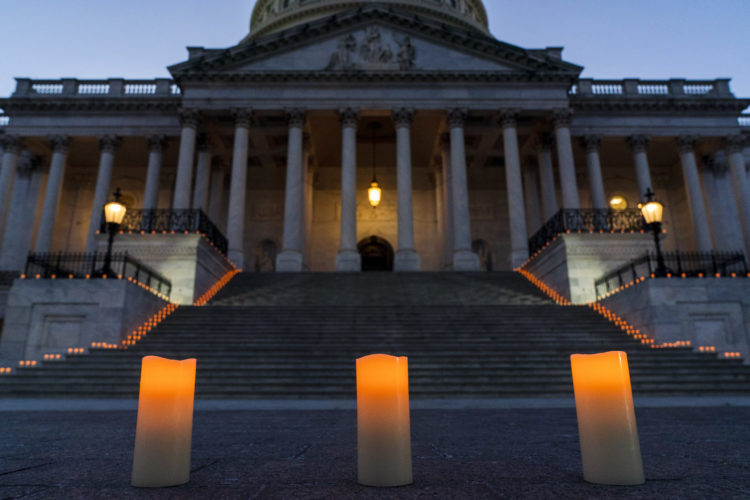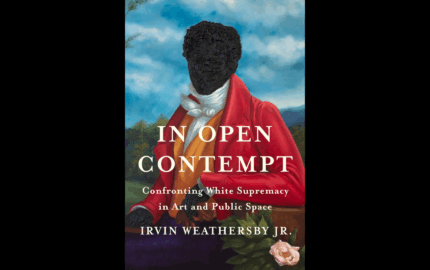The number, when it landed, should have been no surprise. Even so, it held the power to shock. I spent a week bracing myself for news that the COVID death rate in the U.S. had hit 500,000 — leading the world's 2.5 million deaths. It felt like lying awake through a restless night, watching the numbers flap down, one by one by one without mercy, on an old-style digital alarm clock.
When the alarm finally sounded this past Monday, the rush of news that followed was inevitable. The stories have tried to put that number in some context to help people grasp the enormity: 500,000 dead in 13 months.
It is a standard and necessary practice of journalism to use familiar analogies to help people imagine the unimaginable. COVID deaths were compared to the loss of American lives during war, or it was noted that they eclipse the number of service people buried at Arlington National Cemetery. The front page of The New York Times featured a simple graphic of black dots spread over time, each dot representing one of the 500,000 dead; much of the graphic looked solid black. Vox showed a map of pink hotspots across a map of the U.S. that grew pinker and hotter as the year went on. The Washington Post offered several ways to put the number of dead into perspective: Everything from white flags in a field, to a digital counter marking each death as it comes along, to a string of buses loaded with COVID victims. The losses filled 9,804 buses that made a caravan 94.7 miles long, stretching from Philadelphia to New York City.
But I saw the news first on a social media post from NBC News, and what sticks in my mind was the number they posted: 500,001.
I wondered: Who is the one? It looked so lonely there at the end of mass tragedy.
Maybe it's because I have spent much of my career looking for stories in which the right one can stand-in for the many. Maybe I fretted that, with so much attention on the big benchmark number, the one would be overlooked. Maybe it was a stark reminder that the flaps on the alarm clock are still falling. Journalists and politicians and researchers and medical experts try to get people to understand the import of that benchmark number — 500,000. While they do so, there is another one, and another one, and another one.
History will record the COVID story as a collective loss, as it has for the 1918 flu and various wars and those lost to bombings and plane crashes, and cancer. But for any of us who have experienced loss, we know true loss comes down to the irreplaceable one.
A version of this post first appeared in the Nieman Storyboard newsletter.
When the alarm finally sounded this past Monday, the rush of news that followed was inevitable. The stories have tried to put that number in some context to help people grasp the enormity: 500,000 dead in 13 months.
It is a standard and necessary practice of journalism to use familiar analogies to help people imagine the unimaginable. COVID deaths were compared to the loss of American lives during war, or it was noted that they eclipse the number of service people buried at Arlington National Cemetery. The front page of The New York Times featured a simple graphic of black dots spread over time, each dot representing one of the 500,000 dead; much of the graphic looked solid black. Vox showed a map of pink hotspots across a map of the U.S. that grew pinker and hotter as the year went on. The Washington Post offered several ways to put the number of dead into perspective: Everything from white flags in a field, to a digital counter marking each death as it comes along, to a string of buses loaded with COVID victims. The losses filled 9,804 buses that made a caravan 94.7 miles long, stretching from Philadelphia to New York City.
But I saw the news first on a social media post from NBC News, and what sticks in my mind was the number they posted: 500,001.
I wondered: Who is the one? It looked so lonely there at the end of mass tragedy.
Maybe it's because I have spent much of my career looking for stories in which the right one can stand-in for the many. Maybe I fretted that, with so much attention on the big benchmark number, the one would be overlooked. Maybe it was a stark reminder that the flaps on the alarm clock are still falling. Journalists and politicians and researchers and medical experts try to get people to understand the import of that benchmark number — 500,000. While they do so, there is another one, and another one, and another one.
History will record the COVID story as a collective loss, as it has for the 1918 flu and various wars and those lost to bombings and plane crashes, and cancer. But for any of us who have experienced loss, we know true loss comes down to the irreplaceable one.
A version of this post first appeared in the Nieman Storyboard newsletter.



